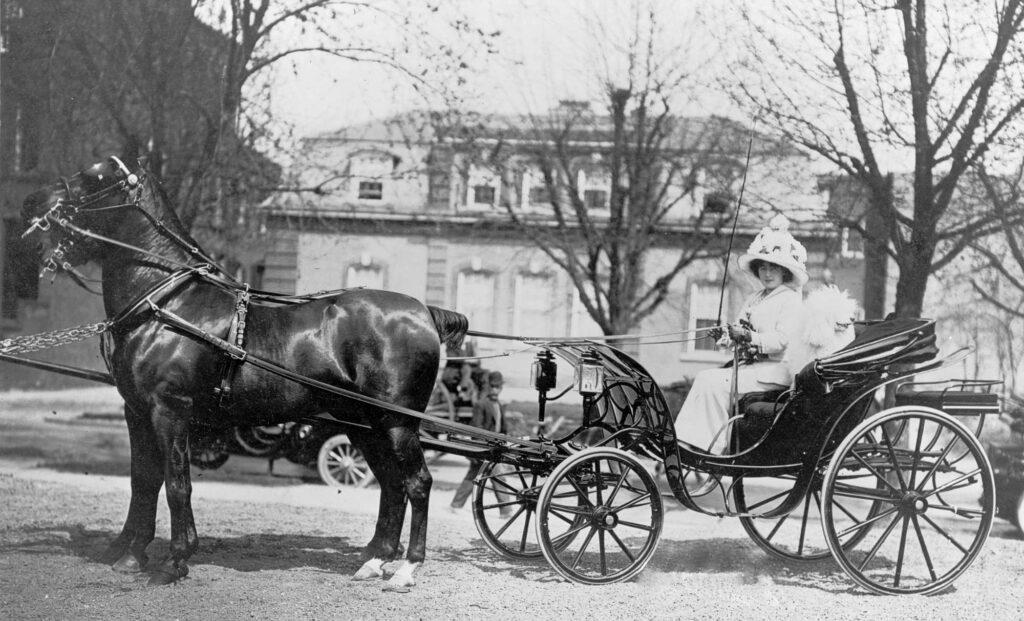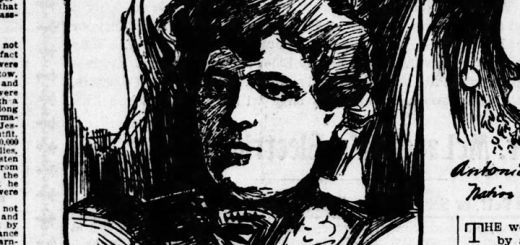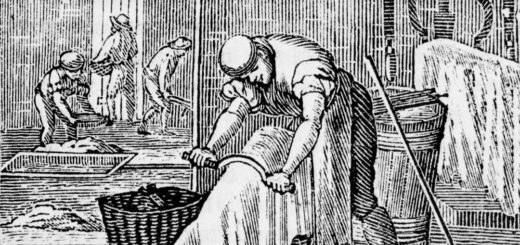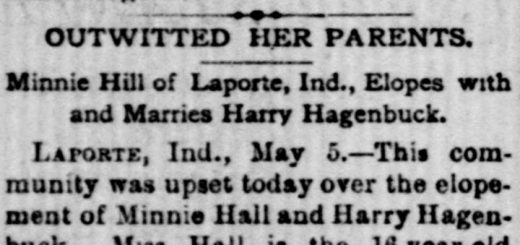Dowager Julia A. (Landbach) Hagenbuch
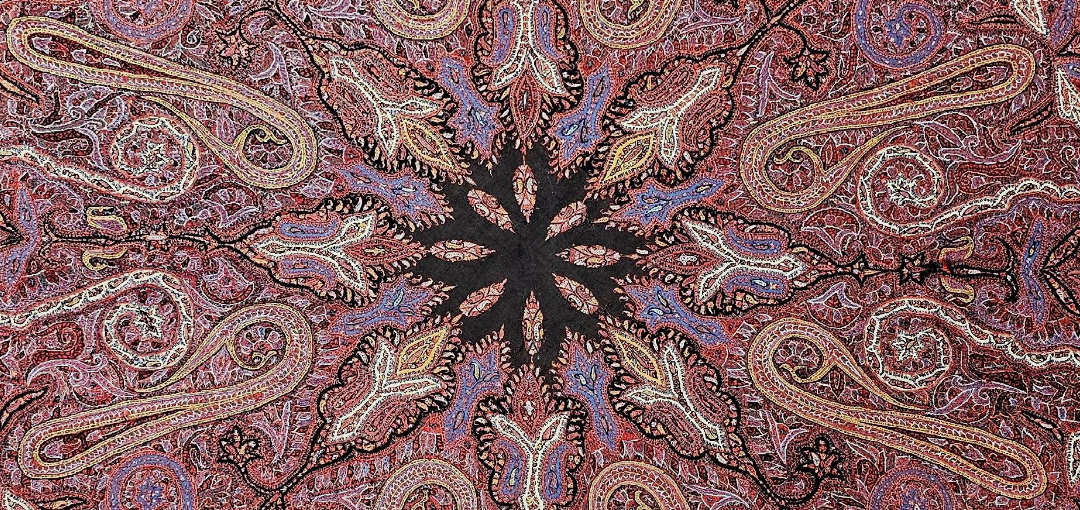
If you have ever watched a Marx Brothers’ film, then you are probably familiar with the character of the dowager—a wealthy widow. In many of the Marx Brothers’ films, the dowager was portrayed by actress Margaret Dumont (b. 1882), and she was usually the object of Groucho’s affection. Our Hagenbuch family has its own dowager character, Julia A. (Landbach) Hagenbuch, although we don’t know if she had a Groucho chasing after her!
Julia’s birthdate and middle name are a bit of a mystery. According to her death certificate, she was born in 1812. However, this does not agree with the 1815 date on her gravestone, nor does it reflect the census records that show she was born in July of 1819. In addition, her middle initial “A” is never explained. Some researchers list her paternal grandmother as Julianna (Barron) Landbach, suggesting that Julia’s name may have been “Julianna” or “Julia Anne.” With all the evidence considered, it seems reasonable to assert that Julia A. Landbach was born July of 1819 in Briar Creek Township, Columbia County, Pennsylvania.
Her parents were George Landbach (b. 1789) and Elizabeth (Wertz) Landbach (b. 1791). Julia lived with both of her parents and a younger brother until May 31, 1831, when her father died. He was buried at Briar Creek Cemetery (also called Housenick Cemetery) and Julia’s mother, Elizabeth, took over managing the household.
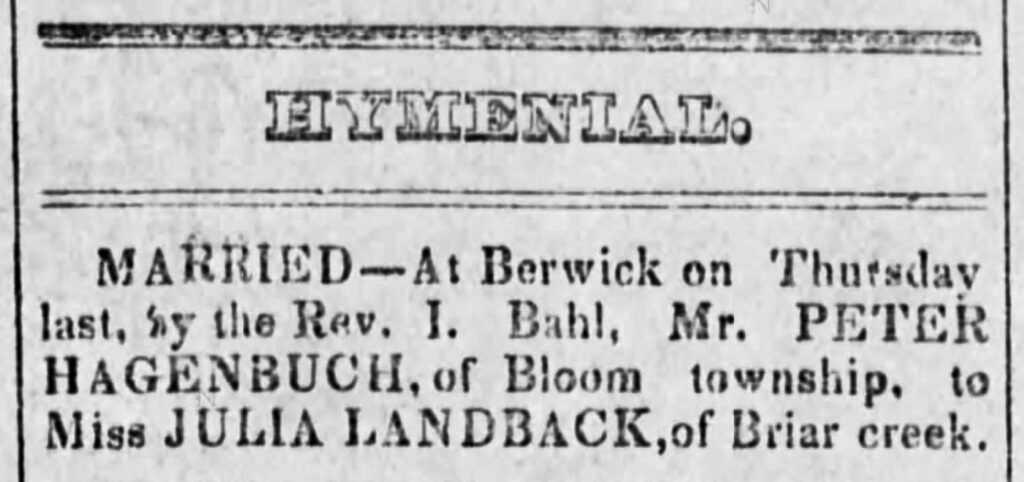
Wedding announcement for Peter Hagenbuch and Julia Landbach from “The Columbia Democrat” published December 5, 1840
According to an announcement in The Columbia Democrat, Julia A. Landbach (written as Landback) married Peter Hagenbuch (b. 1818) on Thursday, December 3, 1840 in Berwick, PA. The service was officiated by Reverend I. Bahl. Peter’s family line is as follows: Andreas (b. 1715) > Michael (b. 1746) > Andrew (b. 1785) > Peter (b. 1818). It’s worth noting that Peter’s gravestone shows his birth year as 1819. Yet, according to the church records for the Evangelical Lutheran in McEwensville, PA he was actually born in late 1818. Peter has been featured in several previous articles, such as this one that detailed key aspects of his life.
Peter and Julia (Landbach) Hagenbuch moved to a large farm in Centre Township, Columbia County, PA. In 1850, their household included Julia’s mother, Elizabeth (Wertz) Landbach, and two young children from other families: John Allwood (age 8) and Charlotte Giger (age 2). It is not believed that Peter and Julia had any biological children of their own. By 1860, they had moved to a farm in Kelly Township, Union County, PA. Julia’s mother was still living with the couple, although there was a new adopted daughter in the household: Emma A. (b. 1852). The couple would go on to adopt two more children: Henry “Harry” Clay (b. 1859) and Isabella (b. 1861).
The family began to amass property on both sides of the west branch of the Susquehanna River. Before the bridge to Milton, PA was completed, the only way to cross the river was by ferry. This could be dangerous. In 1867, Peter was ferrying his horse and buggy across the Susquehanna, when the horse stepped off the ferry and fell into the water. It pulled the buggy and Peter into the river too. While he made it to shore and survived, the horse and buggy were lost.
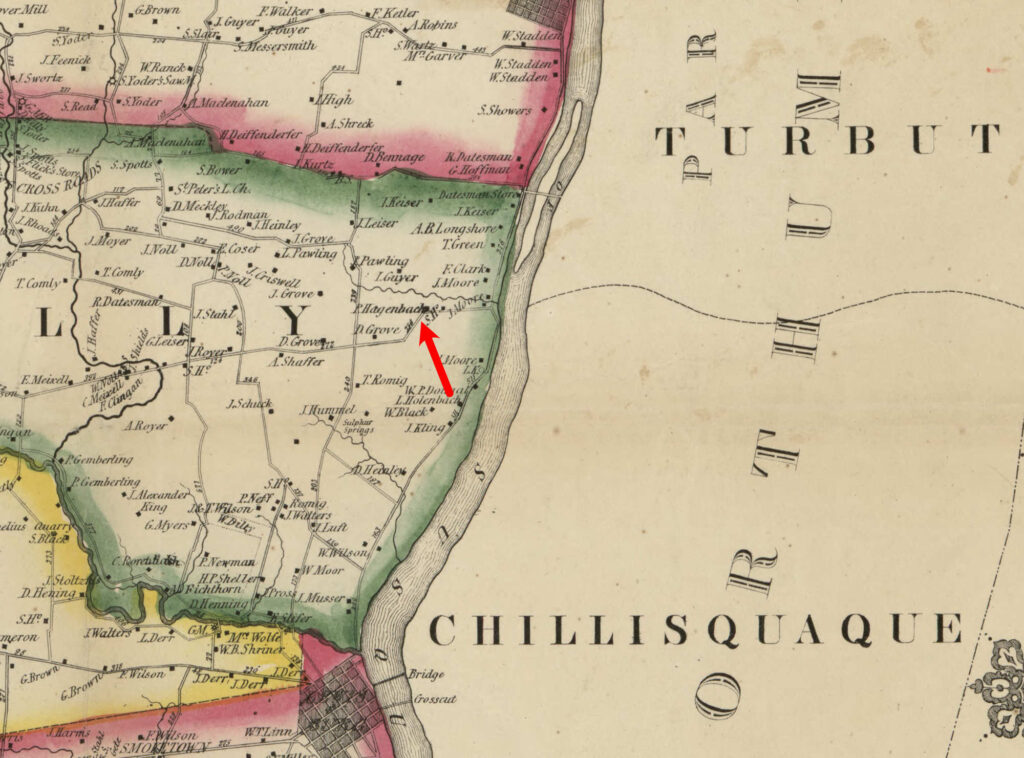
Peter and Julia (Landbach) Hagenbuch’s farm in Kelly Township, Union County, PA was across the west branch of the Susquehanna River from Turbot and Chillisquaque Townships where they also owned property.
According to the 1870 census, Peter and Julia’s real estate was valued at $30,000 with $8,000 of personal property. This is at least three times more than most of the other farmers in that area of Pennsylvania! The couple had nearly 400 acres of land including: three town lots in Milton, PA; a 91 acre farm and a 31 acre farm in Chillisquaque Township, Northumberland County, PA; a lot in Lewisburg, PA on North Second Street containing a 3-story hotel; a 101 acre farm in Turbot Township, Northumberland County, PA just north of Milton; and a 152 acre farm in Kelly Township, Union County, PA where the couple resided.
Peter Hagenbuch died on February 20, 1875, leaving his wife, Julia, with an estate that was valued at $60,000 (nearly $2 million in today’s money). Much of the estate was sold or rented, with the proceeds going to Julia and three other heirs: Aaron Hagenbuch, Henry “Harry” Hagenbuch, and the heirs of Charles Achenbach. Julia continued to reside at the family’s primary residence—the 152 acre farm in Kelly Township near West Milton, PA. Now a wealthy widow, Julia purchased herself a “fine looking Phaeton” carriage as noted in the Lewisburg Chronicle on September 3, 1875.
Unfortunately, Julia’s money was a source of trouble for her too. An 1876 article in the Miltonian describes one such incident. A man—whom she had fed, clothed, and paid to work around her house—ran off with $65 when she was away from home. She also came into conflict with the executors of her husband’s estate: David A. Kline (b. 1831) of West Milton, PA; Samuel B. Hagenbuch (b. 1850) of Constantine, MI; and Thomas W. Hagenbuch (b. 1841) of Lime Ridge, PA. Samuel and Thomas were Peter Hagenbuch’s nephews, and David Kline may have been a business associate. Julia sued the executors for not distributing to her and Peter’s other heirs their fair share of the estate. The disagreement spawned multiple lawsuits and appeals, with one going to the Pennsylvania Supreme Court.
For example, in 1877 she won an award of $3,325 from the estate for her adopted son and heir Henry “Harry” C. Hagenbuch. A previous article investigated what happened to Harry, who attended Bucknell University in 1878. A recently found piece from the Lewisburg Chronicle provides additional details including Harry’s last name before he was adopted—M’Call (or McCall). Using this information, we can locate Harry in Missouri and later Nebraska. According to marriage application from July 8, 1886, he was born in 1859 to John A. and Martha (Curtis) McCall of Pennsylvania. He then married Jennie Christie of Omaha, NE. More research is needed to determine if any of his descendants are alive today.
Another fascinating detail comes from an article in the Miltonian dated January 17, 1890. According to this, a fire destroyed a newly built barn on a farm she owned just north of Milton. (This may be the earlier mentioned 101 acres in Turbot Township.) Arson was suspected and several people were arrested. The newspaper goes on to state that the property was being rented by Hiram Hagenbuch (b. 1847) and a later article from 1894 details that he lived in an “old stone house near the north ferry” in Milton. Eventually, the farm was sold to Hiram, and he constructed a new home there in 1896. Julia’s connection to Hiram has been discussed before. She was invited to parties held by his family and likely honored with the naming of Hiram’s daughter, Julia Rebecca Hagenbuch (b. 1884).
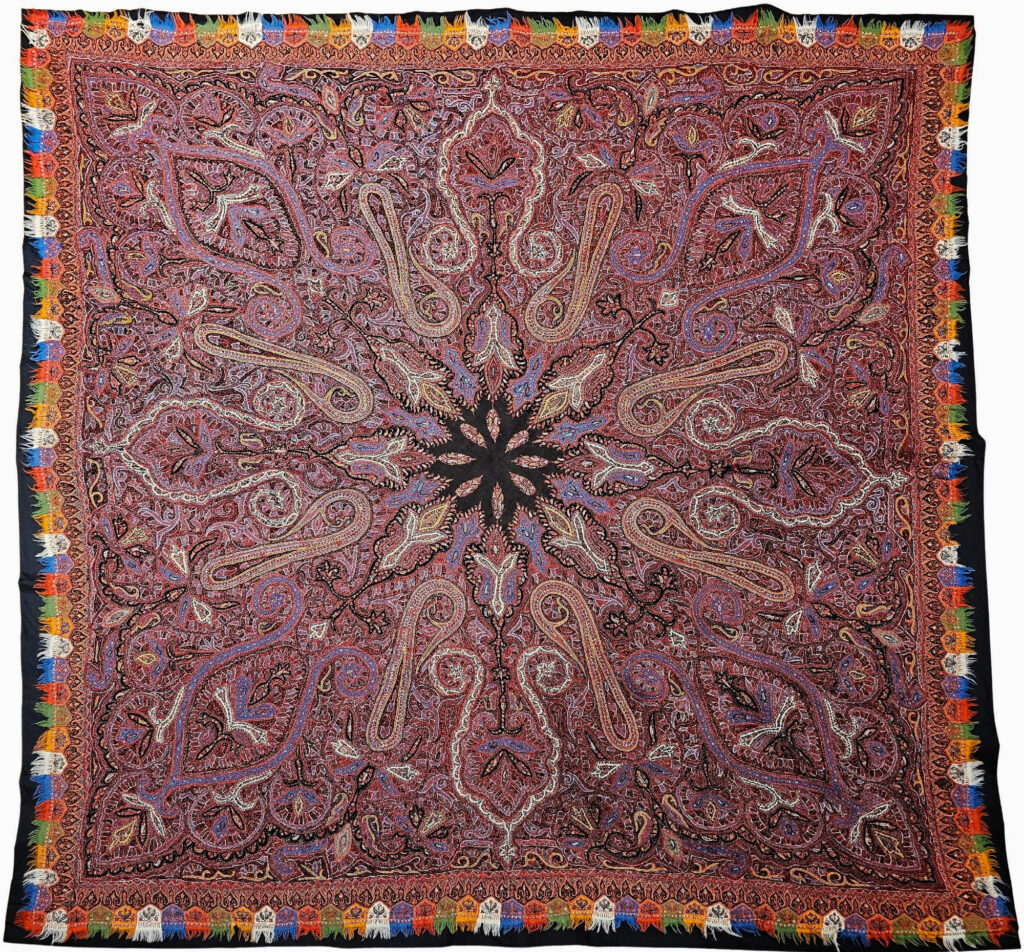
A Paisley shawl with a black center, similar to one worn by Julia A. (Landbach) Hagenbuch. Credit: 1stDibs.com
On October 10, 1890 Julia placed an advertisement in the Miltonian offering an unspecified reward for the return of a square Paisley shawl with a black center that she had lost at the Milton fair grounds. Paisley is a textile pattern that became popular in America during the 19th century. Julia was now in her 70s and had been a widow for 15 years. She was well known in the Milton area. When she took ill for several weeks in February of 1892, a newspaper article discussed that she was expected to recover. Another piece in The Columbian from November 17, 1893 explained how she and her daughter visited Henry Hagenbuch of Lightstreet, PA. This was probably Henry W. Hagenbuch (b. 1812), who was the older brother of her deceased husband, Peter, and the father of executor Thomas W. Hagenbuch.
Julia had young people living and working for her as she aged. Sadly, at least two of them died while in her employment. According to an article in the Miltonian from June 29, 1894, one helper, Fannie Lambert, died after a brief, unspecified illness. She was 18 years old and appears to have been Julia’s first cousin, twice removed on the Landbach side of her family.
The bad news continued in 1906 when another relative and helper of Julia’s died—this time due to suicide. On March 8th, the Danville Morning News reported that 23-year-old Carrie E. Foust (b. 1882) had swallowed a fatal amount of carbolic acid. Julia found her dead in a second floor bedroom at her home in West Milton, PA. Carrie was the daughter of Calvin Foust (b. 1854), who was brother of Tilman Foust (b. 1844). Tilman was married to Mary Ann Hagenbuch (b. 1842), and she was the sister of Hiram Hagenbuch (b. 1847).
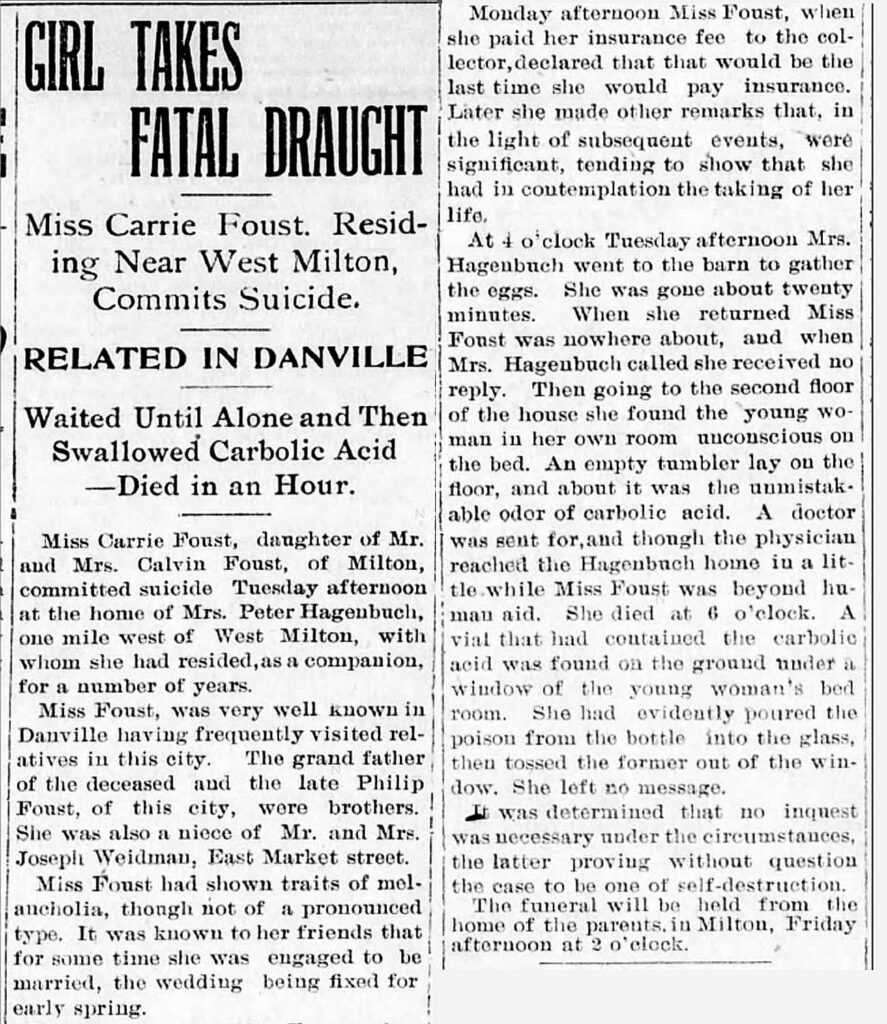
Article about the death of Carrie E. Foust at the home of Julia (Landbach) Hagenbuch from the “Danville Morning News” published March 8, 1906
Julia A. (Landbach) Hagenbuch died of pneumonia on April 22, 1908. While various newspapers reported that she had lived to the age of 96, she actually appears to have been 88 years old. The remainder of her estate was sold in 1908 by two of the executors she had fought with for many years: Thomas W. Hagenbuch and Samuel B. Hagenbuch.
During the process of researching Julia’s life, one thing really stood out: the complete lack of photographs of her or her husband, Peter. Given their wealth and status, they certainly had portraits taken. What happened to these? The most logical theory is that any photographs were lost or discarded when the estate was sold. Without any biological children of their own, it is probable that no one else wanted these images or cared to preserve them. This is a sad thought, indeed, and underscores the work of genealogists to remember and tell the stories of all family members.

